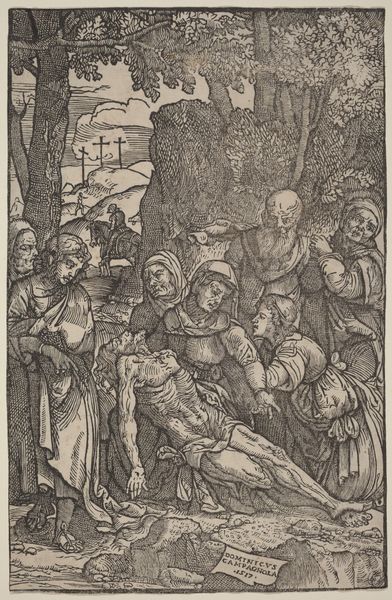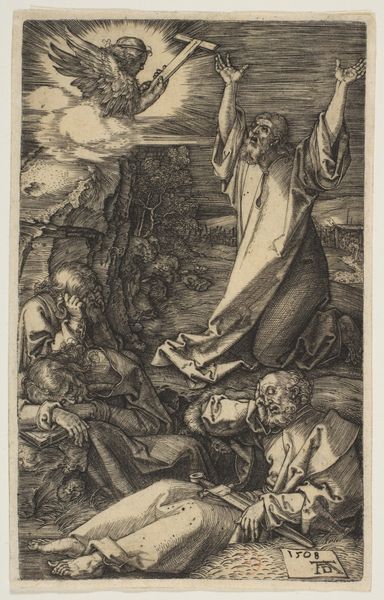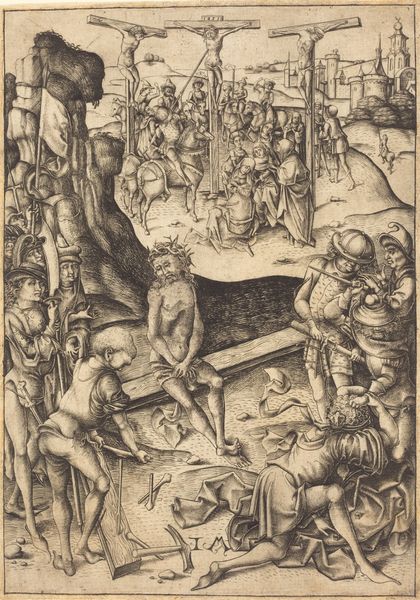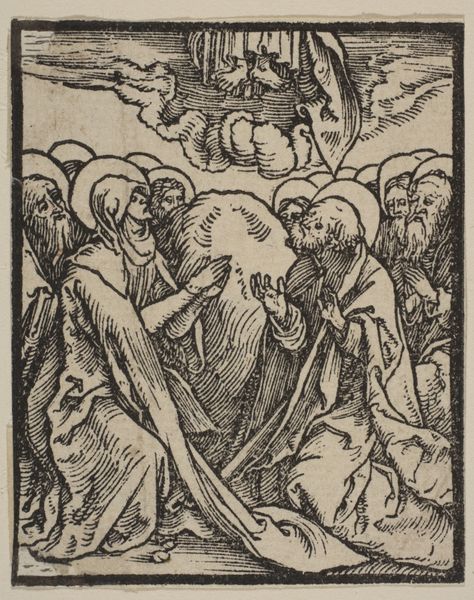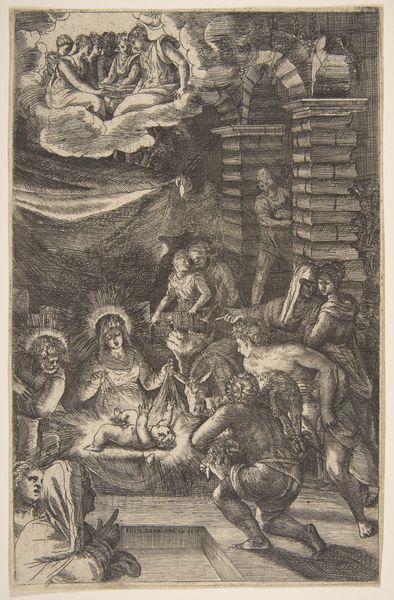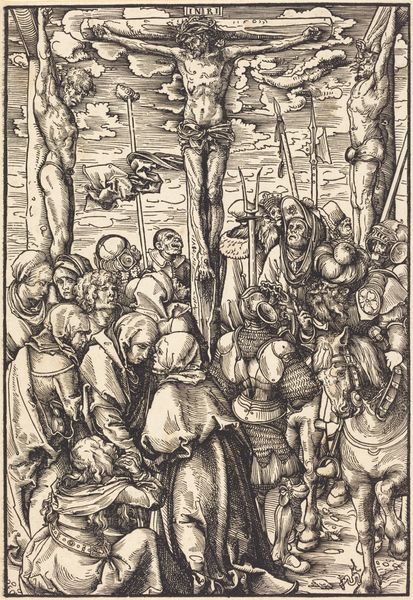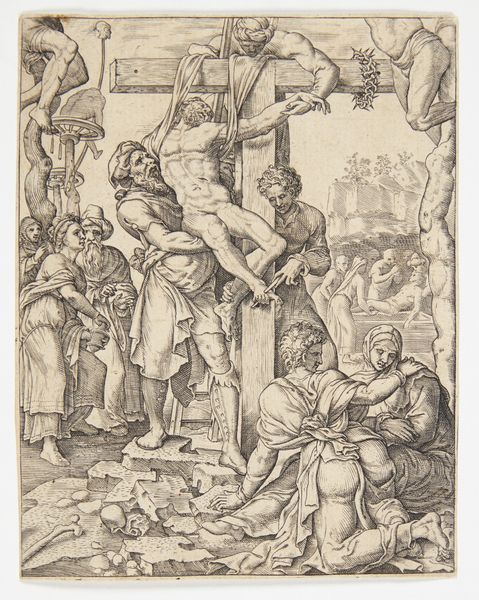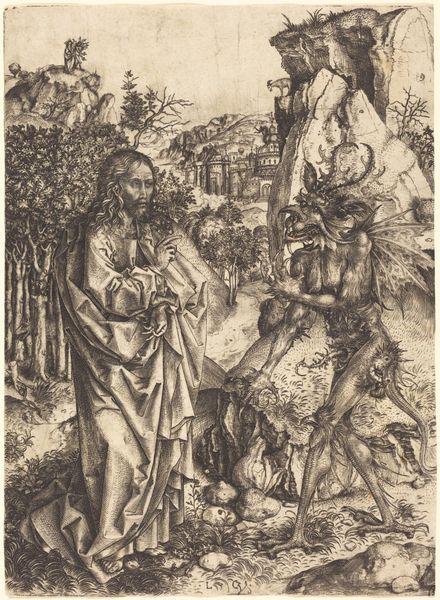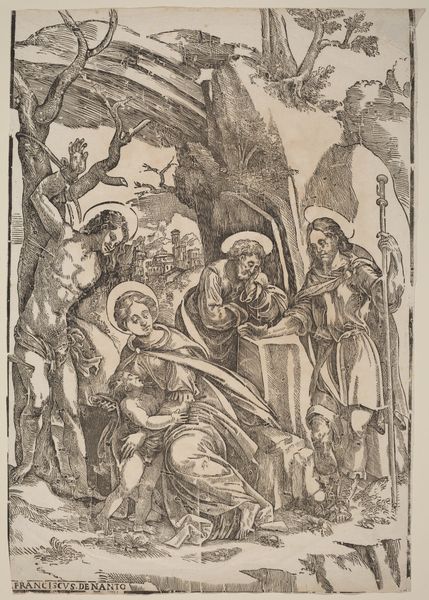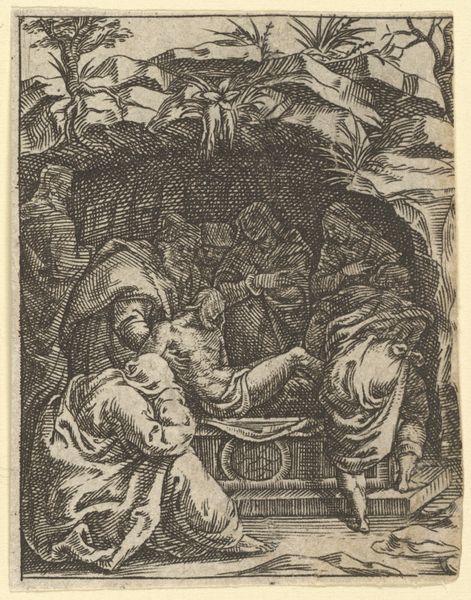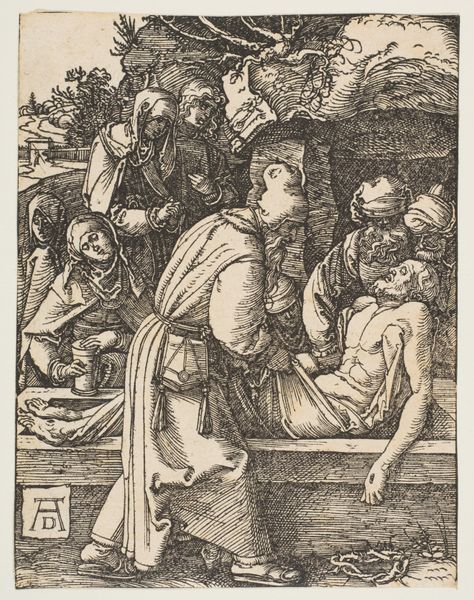
print, intaglio, woodcut
# print
#
intaglio
#
landscape
#
figuration
#
woodcut
#
history-painting
#
northern-renaissance
Copyright: National Gallery of Art: CC0 1.0
Editor: Here we have Hans Wechtlin I's "Baptism in Jordan", a woodcut print rendered in the style of the Northern Renaissance. What strikes me is the very earthly rendition of a sacred moment, complete with rabbits hopping around! How do you interpret this work in relation to its time? Curator: That’s a keen observation. The earthy rendering is precisely what makes it a potent visual statement. Wechtlin, working in a period of religious upheaval, situates the divine within the quotidian, challenging established power structures through the very act of depicting accessible spirituality. Editor: Accessible spirituality? Curator: Consider the Reformation context. The printing press allowed for the mass dissemination of images and ideas, circumventing the Church's control over religious narratives. A print like this, depicting Christ’s baptism, reframes a core Christian ritual not as mediated by the Church, but as a direct, personal encounter. Editor: So the rabbits aren't just decoration? Curator: Precisely. Animals can be read as symbols of fertility and renewal, but within this politicized religious environment, these could even have represented the common flock that had moved towards a purer teaching. The act of translating it into the vernacular visually democratizes faith, which is inherently challenging to the Catholic Church’s authority. Note how the angels themselves are observers, seemingly in awe of the genuine, humble scene unfolding. What does that suggest to you? Editor: It suggests that this woodcut, beyond its aesthetic value, really functions as a political act. I hadn't thought about the socio-political implications in this level of depth before. Curator: Art is always interwoven with power, and in that sense Wechtlin’s “Baptism” becomes a statement on how faith could be seen, understood, and above all, practiced. I appreciate how it speaks to us across the centuries with renewed relevance today.
Comments
No comments
Be the first to comment and join the conversation on the ultimate creative platform.
